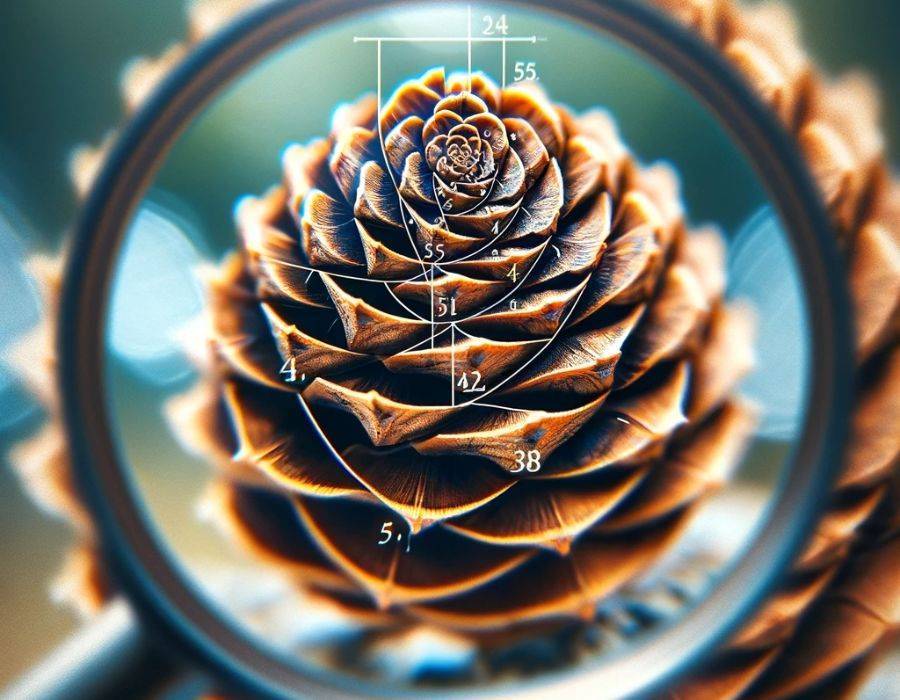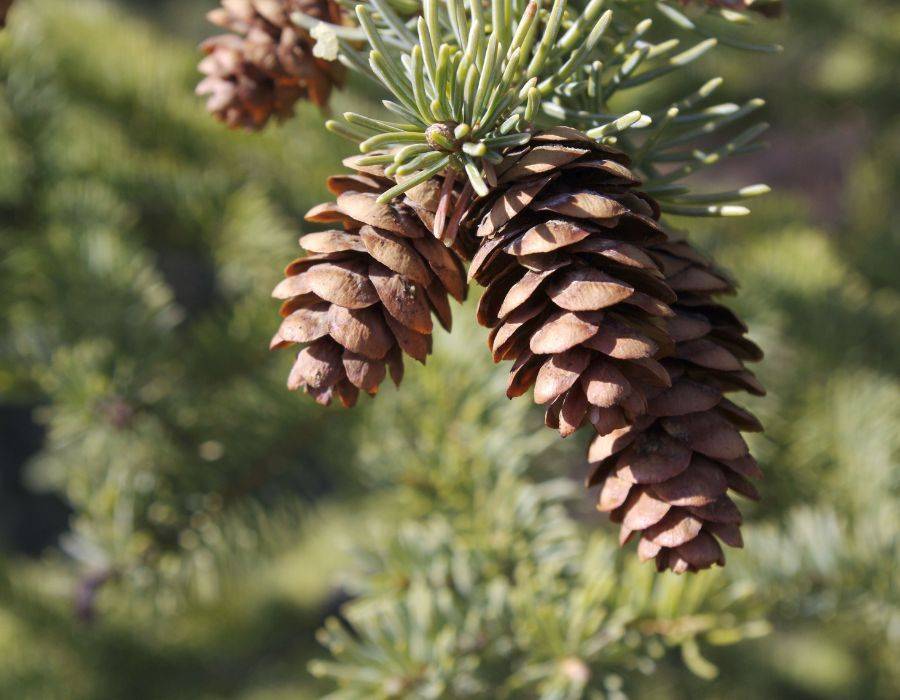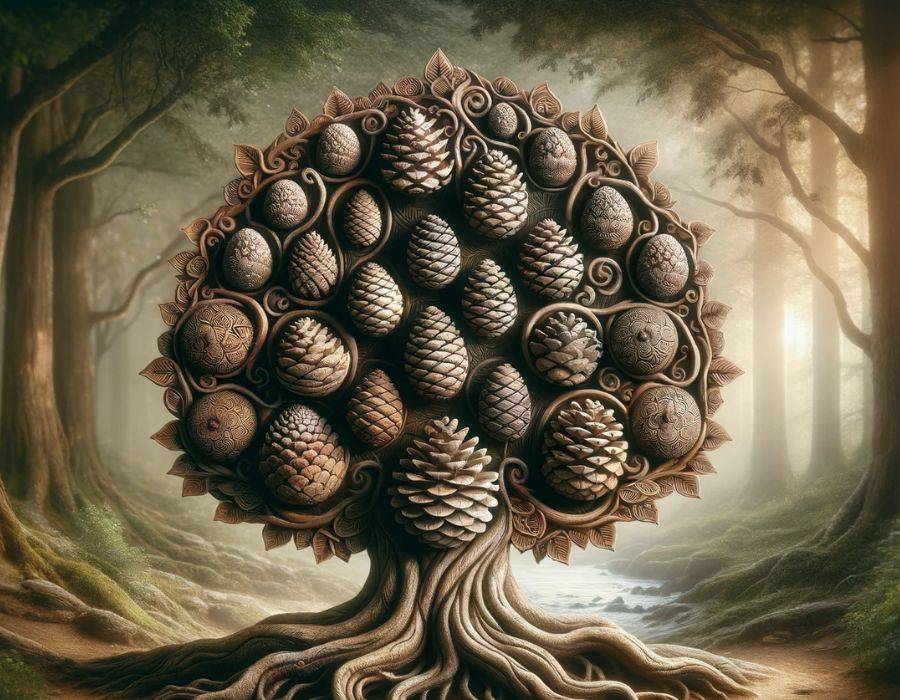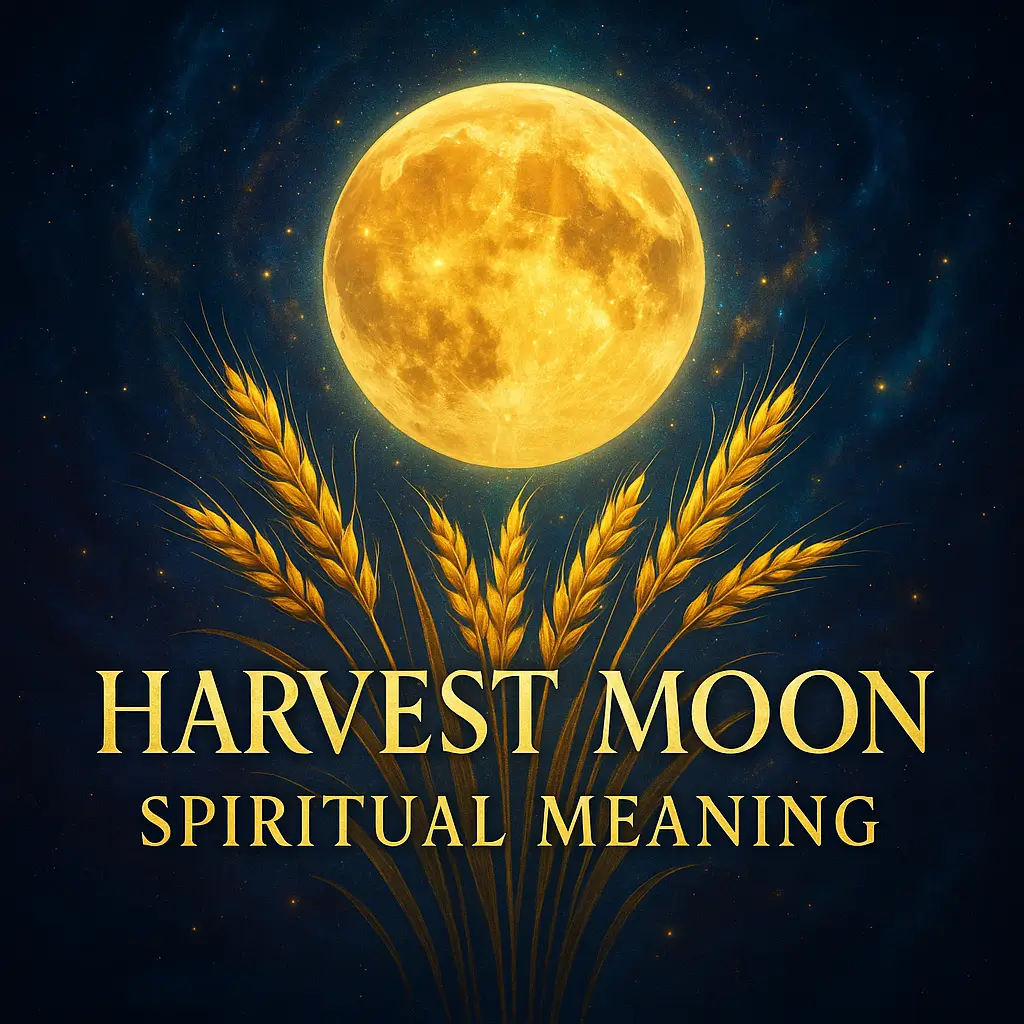Did you know that the ancient Mesopotamians placed enormous bronze pinecones at the entrances of their sacred temples over 5,000 years ago? These weren’t merely decorative – they represented the pineal gland, often called our “third eye,” which ancient cultures believed was the seat of spiritual enlightenment and cosmic consciousness. Even more fascinating, the Vatican itself features a massive 13-foot bronze pinecone sculpture in its courtyard, a relic from ancient Rome that now stands as a silent testament to this symbol’s enduring spiritual power.
The pinecone’s spiral pattern follows the sacred Fibonacci sequence – nature’s divine mathematical blueprint – making it one of the most perfect examples of sacred geometry found in the natural world. This is why pinecone spiritual meaning transcends cultural boundaries, appearing in religious iconography from Christianity to Hinduism, ancient Egypt to Native American traditions.
In this exploration, we’ll uncover why this humble seed vessel has captivated spiritual seekers for millennia, what messages it might carry when it appears in your dreams or path, and how its symbolism of enlightenment, fertility, and eternal rebirth can illuminate your own spiritual journey.
Table of Contents
- 1 Key Takeaways
- 2 Core Symbolism and Meaning of Pinecones
- 3 Cultural, Religious, and Mythological Interpretations of Pinecones
- 4 FAQ
- 4.1 What do pinecones symbolize in spiritual love connections?
- 4.2 How can pinecones enhance romantic relationships?
- 4.3 What is the connection between pinecones and the heart chakra?
- 4.4 Are pinecones considered love tokens in different cultures?
- 4.5 How can I use pinecones in love rituals or meditation?
- 4.6 What does finding a pinecone unexpectedly mean for my love life?
- 4.7 How do pinecones relate to the divine feminine in love spirituality?
- 4.8 Can pinecones help heal a broken heart?
Key Takeaways
- Pinecones follow the Fibonacci sequence in their structure, representing nature’s divine blueprint and spiritual evolution.
The pinecone is connected to the pineal gland in our brain, which ancient cultures recognized as our internal “third eye” associated with intuition and spiritual perception.
Many pinecones require fire to release their seeds, symbolizing how challenges can trigger transformation and unleash our greatest potential.
Across cultures from Mesopotamia to Christianity, pinecones have symbolized spiritual awakening, enlightenment, and eternal life.
Pinecones represent fertility and abundance in various traditions, including love symbolism where they represent enduring affection and relationship growth.
Core Symbolism and Meaning of Pinecones
The Sacred Geometry of Awakening
The pinecone’s spiritual meaning begins with its extraordinary structure. Standing in a forest one morning, I was struck by the perfect spiral patterns of a fallen pinecone – each scale arranged with mathematical precision. This isn’t coincidence; pinecones follow the Fibonacci sequence, nature’s divine blueprint found in everything from seashells to galaxies.

This sacred geometry is why ancient cultures worldwide venerated the pinecone as a symbol of enlightenment and cosmic awareness. The spiraling scales represent the gradual unfolding of consciousness and spiritual evolution – a perfect metaphor for our own awakening journey.
Pinecones as Symbols of Fertility and Abundance
In many traditions, pinecones symbolize fertility and abundance. Their seeds contain all the potential of mighty trees, reminding us of our own creative power. The pine tree itself, evergreen and resilient through harsh winters, reinforces this symbolism of enduring life force.
Pinecone spiritual meaning love connections arise from this fertility symbolism. In ancient Rome, pinecones were associated with Venus, the goddess of love, representing the fertile and regenerative aspects of romantic unions. Couples would exchange pinecones as tokens of enduring affection and wishes for a fruitful relationship.
Today, this symbol continues to represent the planting of love’s seeds and watching them grow into something magnificent. When relationships face challenges, the pinecone reminds us that love, like the pine tree, can weather difficult seasons and emerge stronger.
The Third Eye Connection
Perhaps most fascinating is the pinecone’s connection to our pineal gland – the pine cone-shaped organ in our brain associated with intuition and spiritual perception. Ancient cultures recognized this similarity, viewing the pinecone as an external representation of this internal “third eye.”
The pineal gland produces melatonin and regulates our circadian rhythms, quite literally connecting us to cosmic cycles. Scientists have discovered that this tiny gland actually contains photoreceptor cells similar to those in our eyes, lending scientific credence to ancient wisdom about its light-sensitive properties. According to research from the National Institute of Health, the pineal gland even contains tiny crystals that could potentially respond to electromagnetic fields.
This is why spiritual seekers throughout history have used pinecone imagery during meditation and altered states of consciousness, viewing it as a key to unlocking higher awareness and intuitive abilities.
Resilience and Transformation
Walking through a recently burned forest, I noticed something remarkable – pinecones, scorched but intact, releasing their seeds. Most pinecones actually require fire to open fully and release their seeds, a powerful metaphor for spiritual transformation.
This represents how our most challenging “fires” often release our greatest potential. The pinecone teaches us that what appears destructive may actually be transformative, creating conditions for new growth and rebirth.

The Tree of Life Connection
In many traditions, the pinecone connects to the Tree of Life concept – a universal symbol representing the interconnectedness of all creation. The pine tree’s vertical growth mirrors our own spiritual aspiration, reaching from earth toward heaven, while its spreading roots represent our grounding in the physical world.
The spiritual meaning of dragonflies shares this transformation symbolism, showing how different natural elements carry complementary spiritual messages. Just as dragonflies represent metamorphosis through their life stages, pinecones embody the cyclical nature of spiritual growth.
Pinecone spiritual meaning love extends to universal love – the recognition that we are all connected branches of the same cosmic tree, separate yet fundamentally united in the great mystery of existence.
The pinecone’s unfolding spirals remind us that spiritual awakening isn’t instantaneous but a gradual process of opening to greater awareness – much like the way pinecones themselves slowly expand to release their seeds when conditions are right.
Cultural, Religious, and Mythological Interpretations of Pinecones
Ancient Civilizations and Pinecone Spiritual Meaning
Standing before the massive bronze Pigna at the Vatican, I couldn’t help but wonder why a giant pinecone stood in Christianity’s most sacred place. This 4-meter tall Roman sculpture reveals how deeply the pinecone has penetrated our spiritual consciousness across civilizations and millennia.

In Mesopotamia, Assyrian palace reliefs depicted divine figures holding pinecones toward the Tree of Life—symbols of immortality and spiritual nourishment. Egyptian staffs featured pinecones as emblems of enlightenment, while in Babylon, they adorned monuments to fertility deities.
Pine Cone Symbolism in Christianity
Within Christian tradition, the pine cone symbolism in Christianity runs surprisingly deep. Early Christians adopted the pinecone as a symbol of spiritual awakening and eternal life. In medieval churches, pinecones were carved into pillars and pews, representing spiritual fertility and resurrection.
The pine cone Bible verse connection appears subtly in descriptions of temple decorations. In 1 Kings 6:18, Solomon’s temple contained carvings of “gourds and open flowers”—which some scholars believe referred to pinecones and lilies, representing divine wisdom and purity.
According to research from the Americanmagazine, these natural elements in sacred architecture symbolized God’s generative power flowing through creation.
The staff of the pope himself—called the papal ferula—often features a pinecone, connecting modern Christianity to ancient symbols of spiritual authority and divine wisdom.
Celtic and Pagan Traditions
Walking among ancient Celtic sacred sites, I’ve noticed pinecone carvings on stone monuments and ritual objects. For Druids, the pinecone spiritual meaning love extended to universal love—representing the nurturing, fertile aspect of the Great Mother goddess.
Celtic communities placed pinecones in burial mounds, symbolizing continued life after death. During winter solstice celebrations, they decorated with evergreen boughs and pinecones, affirming life’s persistence even in darkest times.
The Celts saw pinecone spiritual meaning love as part of nature’s romantic wisdom—the pine’s ability to release seeds only when conditions were perfect mirrored the patience needed in finding true partnership.
Eastern and Greek Mythologies
In Greek tradition, Dionysus—god of ecstasy and spiritual intoxication—carried a thyrsus staff topped with a pinecone. This symbolized fertility and the expanding of consciousness through ritual and celebration.
The pinecone’s spiral pattern evoked the mysteries of consciousness that Dionysian rituals sought to unlock. This connection between the third eye pinecone meaning and expanded awareness transcends cultural boundaries, appearing in Hindu traditions where pinecones symbolize awakening kundalini energy.

Native American Beliefs
Many indigenous North American tribes viewed the pinecone spiritual meaning as deeply connected to harmony and wisdom. Some tribes used pine resin for purification ceremonies, while others incorporated pinecones into healing rituals.
The Iroquois considered pine trees “watchers”—sentinels who witnessed and recorded human history through countless seasons. Finding a pinecone during important life transitions was seen as an ancestral blessing, particularly when seeking guidance in matters of meditation and altered states of consciousness.
For the Cherokee, burning pine needles and cones created smoke that carried prayers to the Creator, connecting the burning pine cones spiritual meaning to divine communication and cleansing. This practice reflects the universal tendency to see smoke as a medium between physical and spiritual realms.
The Pinecone’s Color Symbolism
Different colored pinecones carry distinct vibrations in spiritual traditions. The black pinecone spiritual meaning connects to mystery and the void from which creation emerges—representing both challenge and potential.
Meanwhile, the red pinecone spiritual meaning speaks to passion, vitality, and life force energy. Red pinecones found in nature were particularly valued by some Mediterranean cultures as symbols of prosperity and protection.
This color symbolism extends to how we work with pinecones in modern spiritual practice, where they serve as powerful meditation tools embodying the eternal cycle of death and rebirth—just as they do in the forest, where fallen pinecones nurture new generations of trees through the wisdom of their sacred geometry.
FAQ
What do pinecones symbolize in spiritual love connections?
Pinecones represent awakening and enlightenment in love relationships. Their spiral patterns reflect the divine feminine energy and fertility, symbolizing the growth potential within partnerships. They remind us that authentic love unfolds naturally, just as pinecones open when conditions are right.
How can pinecones enhance romantic relationships?
Pinecones can serve as relationship talismans that promote patience and natural timing. Their resilient structure reminds couples that lasting love requires both protection and vulnerability. Keeping pinecones in shared spaces can inspire deeper spiritual connection and encourage relationship growth through conscious awareness.
What is the connection between pinecones and the heart chakra?
Pinecones resonate with the heart chakra through their balanced structure and natural wisdom. They help activate self-love as a foundation for loving others authentically. The pinecone’s geometric patterns mirror the expanding energy of an open heart, helping to dissolve barriers to giving and receiving love.
Are pinecones considered love tokens in different cultures?
Many indigenous traditions view pinecones as fertility symbols and love offerings. In certain European folklore, exchanging pinecones signified enduring affection that would withstand seasonal changes. Some ancient Mediterranean cultures associated pinecones with Venus and Aphrodite, connecting them to passionate and divine love expressions.
How can I use pinecones in love rituals or meditation?
Hold a pinecone during meditation while focusing on heart-opening intentions. Create altar arrangements with pinecones to manifest loving relationships. Write love affirmations on paper and tuck them into open pinecones. These practices harness the pinecone’s natural energy to align with love’s higher vibrations.
What does finding a pinecone unexpectedly mean for my love life?
An unexpected pinecone encounter often signals awakening awareness in your love journey. It may indicate you’re ready to open to new romantic possibilities or deepen existing connections. The pinecone appears as a gentle reminder that love develops through both intuitive wisdom and conscious intention.
How do pinecones relate to the divine feminine in love spirituality?
Pinecones embody the divine feminine through their nurturing, protective qualities and seed-bearing potential. They symbolize the receptive aspects of love that create space for connection to flourish. Their spiral patterns reflect the intuitive wisdom that guides authentic partnerships aligned with higher purpose.
Can pinecones help heal a broken heart?
Pinecones support heart healing by reminding us that closure and opening occur in natural cycles. Their protective scales represent the necessary boundaries during emotional recovery, while their seeds symbolize new beginnings. Working with pinecone energy helps transmute pain into wisdom and renewed capacity for love.



